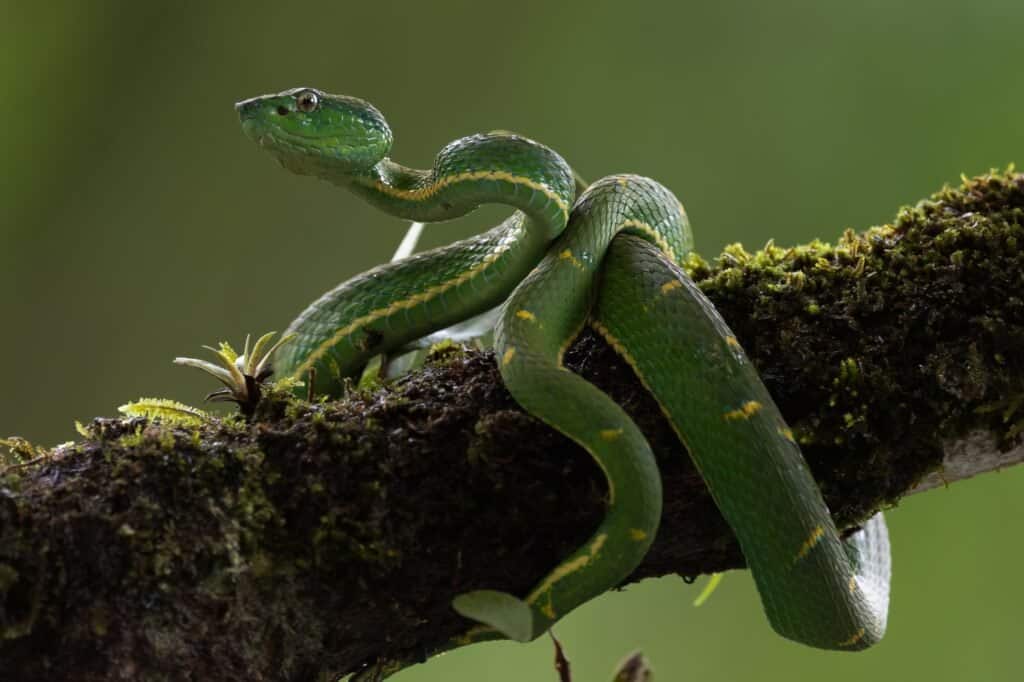Introduction
Tiger snakes (Notechis scutatus) are among the most remarkable yet been afraid reptiles found in Australia. With their striking appearance and powerful poison, these serpents stimulate a mix of admiration and caution. Observing tiger snakes in their natural surroundings can be an electrifying experience for nature enthusiasts, wildlife photographers, and researchers alike. However, it's vital to approach this undertaking with respect for the pet's environment and an understanding of precaution to avoid snake bites.
In this detailed overview, we'll discover just how to securely observe tiger serpents in their natural keelback snake qld habitat. We will certainly cover subjects ranging from recognizing their habits and habitats to first aid for snake attacks-- furnishing you with knowledge to boost your experience while decreasing threats.
What is a Tiger Snake?
Tiger serpents are extremely venomous snakes native to Australia, especially Tasmania and seaside areas. They are recognized for their distinctive banded coloration resembling a tiger's red stripes, which can vary from yellowish-brown to dark brown or even black.
Physical Characteristics
Tiger snakes are medium to large-sized snakes that can grow up to 2 meters long. Their bodies are robust, and they have a broad head that is clearly bigger than their necks.
Habitat Preferences of Tiger Snakes
These reptiles generally live in marshes, estuaries, and coastal areas but can also be found near freshwater sources like rivers and lakes. Comprehending where these serpents live is critical for any person looking to observe them safely.
Understanding Tiger Serpent Behavior
Are Tiger Snakes Venomous?
Yes, tiger snakes are amongst one of the most venomous snake Australian snake habitats types globally. Their poison has neurotoxins that can lead to significant medical issues if bitten.
Behavioral Traits
Tiger snakes are usually reluctant animals; they favor to prevent human interaction. Nevertheless, they can end up being aggressive if intimidated or cornered.
Where Can You Discover Tiger Snakes?
Tiger Snake Habitat Exploration
To securely observe tiger snakes in their natural environment, it's important initially to determine where they grow. They tend to favor:
- Coastal marshlands Mangroves Swamps Riverbanks
Best Areas for Observation
Some recommended areas include:

- Tasmanian wetlands The coasts of southern Australia National parks with water bodies
Safety Precautions Before Observing Tiger Snakes
Understanding the Risks of a Tiger Snake Bite
Although encounters with tiger snakes can be thrilling, recognizing the dangers included is critical:
Recognize symptoms of a serpent bite: swelling at the site, discomfort radiating from the bite area. Know emergency situation contacts: Acquaint on your own with regional emergency services. Carry a first-aid package especially furnished for serpent bites.First Aid for Serpent Bites: What You Need to Know
Knowing what actions to take if bitten could save your life or someone else's:
- Stay tranquility; motion boosts venom spread. Call for medical help immediately. Do not apply ice or effort suctioning.
How to Securely Observe Tiger Snakes in Their All-natural Habitat
When you determine to observe tiger serpents in the wild:
Dress Appropriately: Use lengthy trousers and durable boots. Use Binoculars: Keep a secure distance while observing these reptiles. Avoid Abrupt Movements: Quick activities might shock them. Stay on Established Trails: Stay clear of roaming right into thick underbrush where exposure is low.Equipment Required for Observation
Essential Equipment Checklist
- Binoculars First-aid kit especially created for serpent bites Field manual on Australian reptiles Camera (with zoom ability)
Snake Bite First Aid Set Essentials
A well-appointed first aid set need to consist of:|Thing|Function|| -------------------------------|-------------------------------|| Compression bandage|To incapacitate the afflicted location|| Antihistamines|For allergies|| Emergency situation call numbers|Quick accessibility during emergencies|

Interpreting Tiger Serpent Signals
Understanding how tiger serpents interact via body movement assists viewers gauge when it's safe or hazardous:
Common Behaviors
Defensive pose: If curled or elevated off the ground. Retreating habits: When they gradually pull back from prospective threats.Dealing With Potential Encounters
Even with safety measures taken, an experience may still happen during your monitoring trip:
Remain tranquility; stressing just heightens risks. Slowly retreat without transforming your back on the snake. Make your presence known vocally yet stay clear of sudden movements.Frequently Asked Inquiries Concerning Tiger Snakes
1. What should I do if I see a tiger snake?
Remain calmness; observe from a distance without disturbing it.
2. Are child tiger snakes dangerous?
Yes, adolescent tiger serpents are birthed poisonous and might position threats comparable to adults in spite of being smaller.
3. Exactly how usual are tiger snake bites?
While events happen annually in Australia, fatalities are uncommon as a result of punctual therapy availability.

4. Can I keep a tiger snake as a pet?
Keeping wild tiger snakes as pets is unlawful in several regions due to preservation laws.
5. What does a tiger snake attack look like?
Bite marks generally show two puncture wounds in addition to localized swelling and discoloration.
6. Just how efficient is antivenom?
Antivenom therapy is extremely effective when carried out timely after a bite.
Conclusion
Observing tiger snakes in their natural environment provides a thrilling possibility for wild animals fans yet have to be approached with caution and regard for both the creature Informative post and its environment. By arming on your own with expertise regarding these fascinating reptiles-- consisting of understanding their habits and precaution-- you can take pleasure in unforgettable experiences while substantially decreasing dangers connected with encounters.
In summary, constantly prioritize safety and security by preparing adequately before starting any kind of wildlife monitoring exploration-- especially when managing some of nature's most venomous animals like the tiger snake!